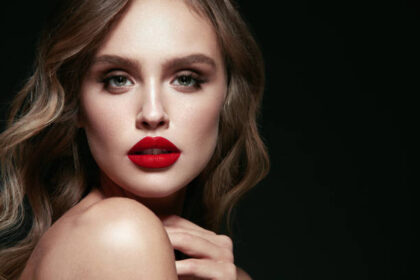Blackheads are a common skin concern that affects people of all ages. They form when pores become clogged with excess oil (sebum), dead skin cells, and impurities. Unlike whiteheads, which remain closed, blackheads are open to the air, allowing oxidation to turn the trapped material dark in color. They often appear on the nose, forehead, chin, and cheeks—areas with more active oil glands. While blackheads are not dangerous, they can be frustrating, especially in hot and humid environments like Dubai. This leads many people to seek professional treatments that offer both effectiveness and safety. One popular option is the HydraFacial in Dubai, known for its deep-cleaning properties and non-invasive technology that helps manage blackheads efficiently.

How Hydrafacial Works Against Blackheads
The Multi-Step Process of Extraction
Hydrafacial is not your typical facial. It combines exfoliation, extraction, and hydration all in one go using a patented vortex-fusion technology. Here’s how it directly addresses blackheads:
Exfoliation: The treatment begins by removing dead skin cells and surface debris using a gentle physical and chemical exfoliant. This step helps clear the way for deeper cleansing.
Acid Peel: A light chemical peel (usually a mix of glycolic and salicylic acids) loosens dirt and oil from the pores.
Vacuum Extraction: Using a painless suction tip, the machine extracts the loosened blackheads and impurities from the pores.
Serum Infusion: The final step infuses the skin with antioxidants, peptides, and hydration to soothe and protect the skin.
This combination allows for thorough removal of blackheads without damaging the skin, unlike manual extractions or harsh scrubs.
Does Hydrafacial Permanently Eliminate Blackheads?
Short-Term Results, Long-Term Management
While Hydrafacial does an excellent job of removing existing blackheads, it does not offer a permanent cure. Blackheads can return over time due to ongoing factors such as:
Excess oil production
Hormonal changes
Improper skincare
Environmental pollutants
Use of comedogenic products
Hydrafacial should be viewed as part of a consistent skincare routine rather than a one-time fix. Regular sessions can significantly reduce the frequency and severity of blackheads.
Why Hydrafacial Is a Preferred Solution for Blackheads
Benefits of Choosing Hydrafacial Over Other Treatments
Many treatments claim to reduce blackheads, from clay masks to over-the-counter scrubs. However, Hydrafacial offers several advantages:
Non-invasive and pain-free
No downtime or skin trauma
Safe for sensitive and acne-prone skin
Immediate visible results
Hydration instead of dryness post-extraction
These features make it ideal for people in Dubai seeking effective blackhead treatment without the risk of post-treatment redness or irritation.
Ideal Frequency of Hydrafacial for Blackhead-Prone Skin
Tailoring a Treatment Plan That Works
To prevent the return of blackheads and maintain clean pores, skincare professionals often recommend getting a Hydrafacial every 4–6 weeks. For oily or acne-prone skin, more frequent sessions—every 2–4 weeks—might be ideal.
This regular maintenance helps:
Keep pores unclogged
Control oil production
Prevent new blackheads from forming
Maintain a clearer, smoother texture
Long-term consistency is key to managing blackheads effectively.
Complementing Hydrafacial with At-Home Care
Daily Habits That Make a Difference
Hydrafacial provides a professional-level cleanse, but what you do at home matters too. To support the treatment, incorporate the following habits into your skincare routine:
Use a gentle cleanser twice daily
Avoid harsh soaps that strip natural oils, which can trigger excess oil production.
Apply non-comedogenic products
Choose makeup and skincare labeled “non-comedogenic” to prevent clogged pores.
Use salicylic acid products
Between Hydrafacial sessions, a salicylic acid toner or spot treatment can help keep pores clear.
Avoid touching your face frequently
Your hands carry bacteria and oils that can lead to clogged pores.
Stay hydrated and protect your skin from the sun
Hydrated skin is less likely to overproduce oil, and sun protection prevents inflammation and damage.
These small steps can enhance the long-term effectiveness of Hydrafacial in keeping blackheads under control.
Who Should Consider Hydrafacial for Blackheads?
A Versatile Treatment for Most Skin Types
Hydrafacial is suitable for all skin types—including oily, dry, sensitive, and combination skin. It’s particularly beneficial if you:
Regularly experience blackheads on the nose, cheeks, or chin
Have dull or rough skin due to clogged pores
Suffer from acne breakouts or enlarged pores
Want a clean, decongested look without downtime
It’s also a great option for those living in Dubai, where heat, sweat, and dust can easily clog pores and contribute to frequent blackhead formation.
When Will You See Results?
Immediate and Gradual Improvements
After just one Hydrafacial session, most people notice:
A reduction in visible blackheads
Smoother skin texture
A brighter, more even complexion
With regular treatments, you can expect:
Less frequent blackhead formation
Smaller-looking pores
Fewer breakouts
A more refined skin tone
While the results are not permanent, they are long-lasting with consistent care.
Conclusion
Hydrafacial is one of the most effective non-invasive treatments for removing blackheads. It combines gentle exfoliation, chemical peeling, suction-based extraction, and hydration to give your skin a fresh, smooth, and blackhead-free appearance.While it won’t permanently eliminate blackheads, it can significantly reduce their presence and prevent new ones from forming—especially when used as part of a consistent skincare plan. For those seeking a professional solution to recurring blackheads, HydraFacial remains a smart and skin-friendly investment.




